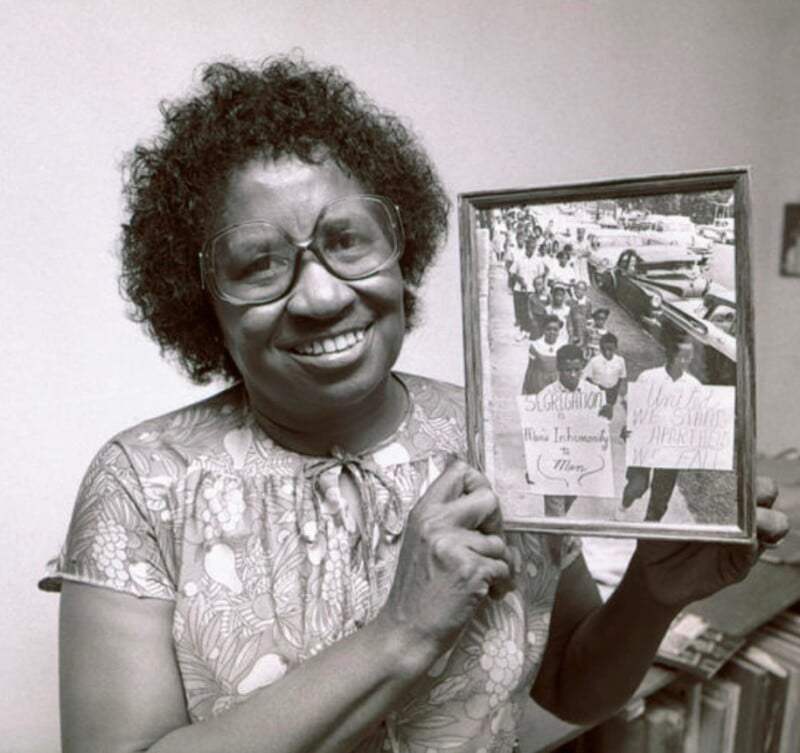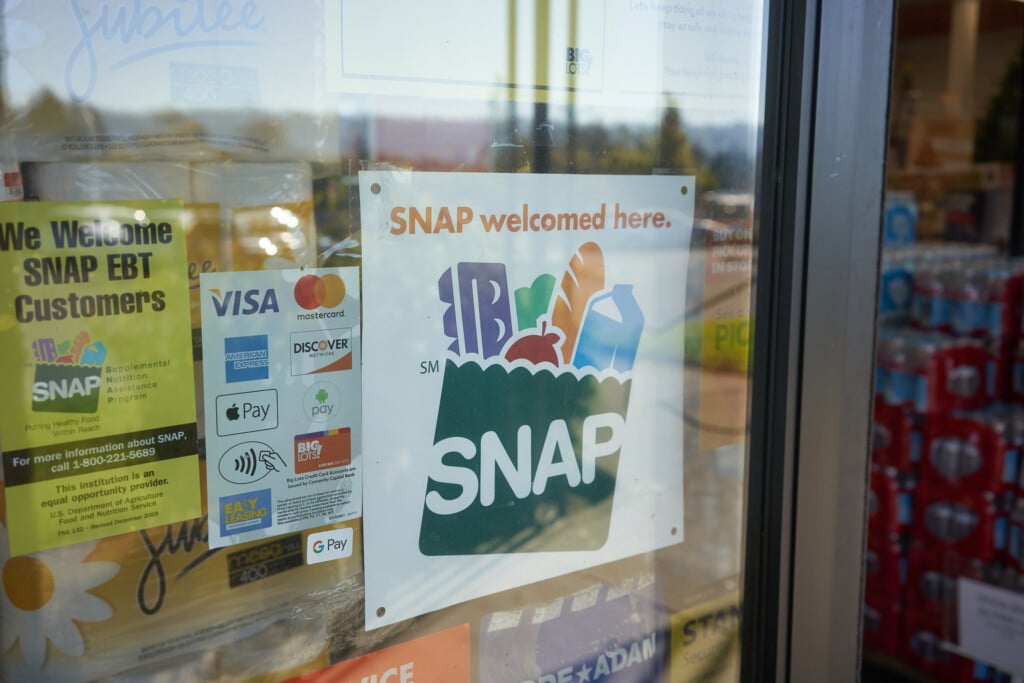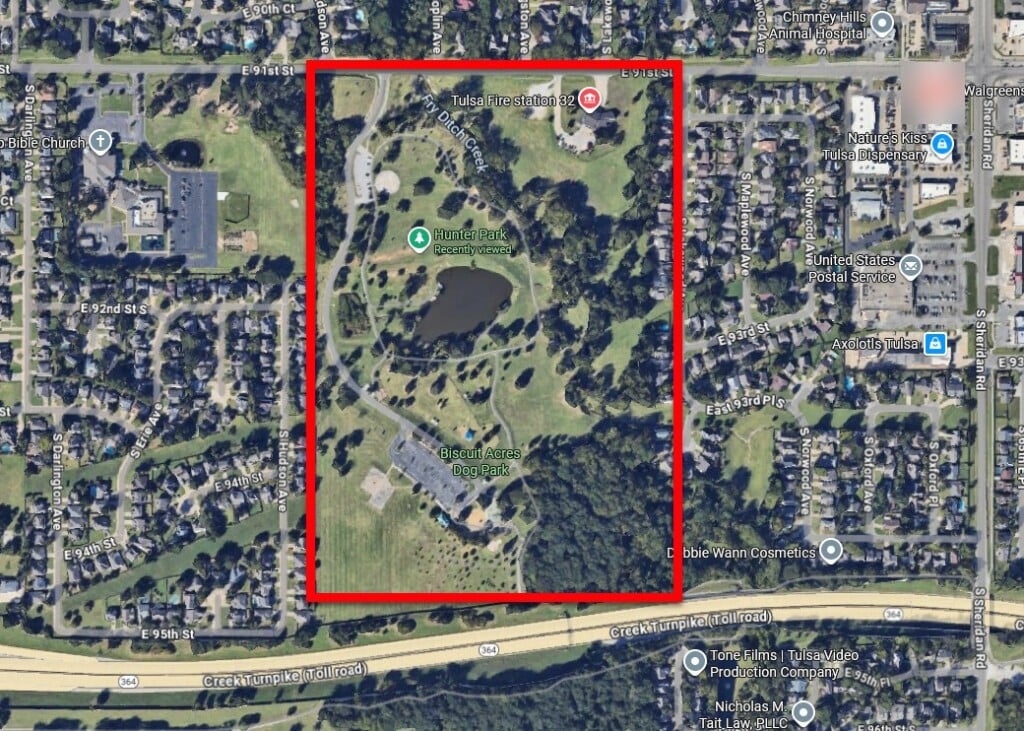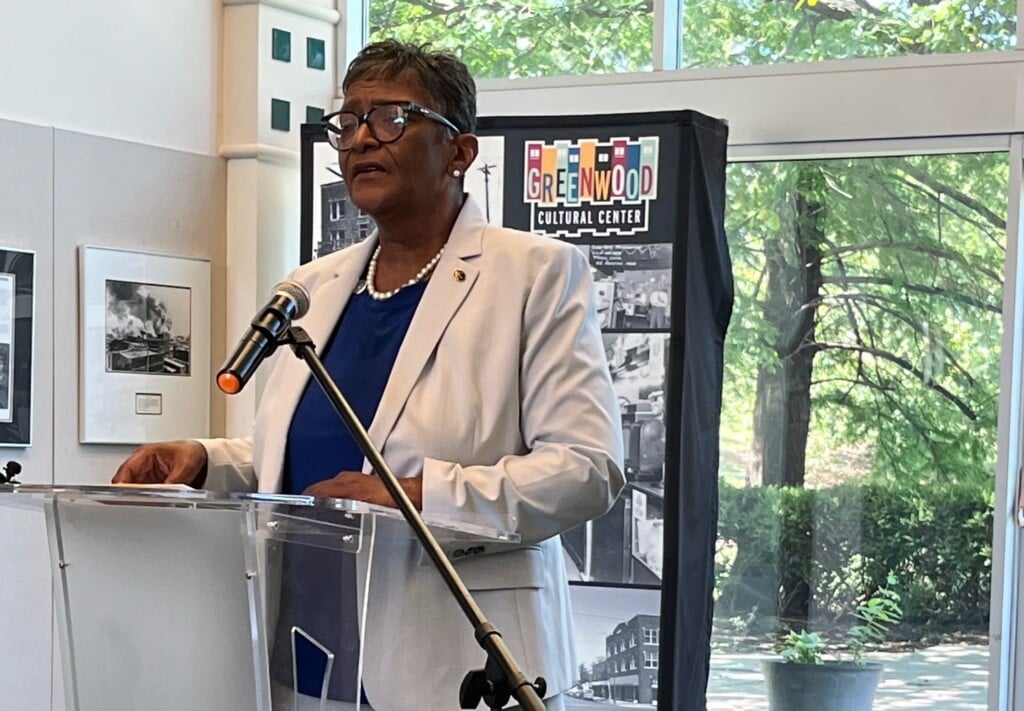Honoring a Courageous Woman

“Behold the Walls!” by Clara Luper
Behold the walls!
Do you see what I see?
Visible walls, Invisible walls
Separating you and me.
The Visible Walls are Crumbling;
As court decisions are handed down.
The Invisible Walls are still Standing.
Making us go Round and Round.
Each of us must be a Joshua,
Blowing our trumpet of Freedom’s Songs,
And the walls will come tumbling down.
And the world will right the wrong.
Clara Luper. Teacher, civil rights activist, author, wife, mother, Oklahoman, courageous woman. Do you know her name? If not, you should. Her courage in breaking down the walls of segregation and her impact on the Civil Rights Movement, not only in Oklahoma, but across the nation, is an inspirational story that shows how one person doing the right thing can impact history.
The Beginning
In 1957 Clara Luper was teaching American History at Dunjee High School in Spencer, Oklahoma. She was also the advisor for the Oklahoma City NAACP Youth Council. During “Negro History Month,” as it was called at the time, Luper presented plays, including “Brother President,” the story of Martin Luther King, Jr., and his nonviolent approach to ending segregation in Montgomery, Alabama. Her students were invited to present the play at a “Salute to Young Freedom Fighters Rally” in New York City.
The trip lit a fire in the young people. Many had never been out of Oklahoma. Stopping for dinner in St. Louis, the group experienced their first integrated lunch counter service. On the trip back to Oklahoma City, the group took the Southern route through Washington, D.C., visiting national monuments and reflecting on what action they could take to improve their country. In the South, as in Oklahoma City, there were no places where Black people could sit and eat – they were given sack lunches to eat outside. That formed the kernel of an idea for a movement.
The Sit-In
After months of studying Dr. King’s nonviolent resistance, the Oklahoma City NAACP Youth Council, under the guidance of Clara Luper, made the decision to stage a sit-in at Oklahoma City’s Katz Drug Store on August 18, 1958. They spent months studying Dr. King’s nonviolent demonstrating. Luper describes the tenants they used in “Behold the Walls,” her memoir about the Oklahoma City sit-ins. She writes, “Nonviolence demonstrates a kind of strength that shows up the weakness of injustices.”
The inequities were blatant and painful. Black people were allowed to shop at the Katz. They were allowed to order (standing) from the counter and take food out, but they could not sit at the counter, order and eat.
On the night of the first sit-in, as they walked to the counter, Luper recalls, “…Lana Pogue, the six-year-old daughter of Mr. and Mrs. Louis J. Pogue, grabbed my hand, and we moved toward the counter. All of my life, I had wanted to sit at those counters and drink a Coke or a Seven-Up….but I had been taught that those seats were for whites only.”
One of the women with the group made the order: “We’d like thirteen Cokes, please.”
The waitress said they would have to take them outside. The group sat said they would drink them at the counter. When they were not served, they continued to politely order the Cokes. The distressed waitress called the manager. The police came and surrounded the counter. The white customers got up, leaving their food, hurling nasty insults, curses and the n-word as they left.
After a long evening, the sit-in group left. But they returned the next day with more young people, even in the face of ugly harassment and death threats. They sat quietly enduring the barrage.
After three days, the non-violent resistance worked. Katz Drug Stores in Oklahoma City, Kansas and Iowa agreed to serve all people regardless of race, creed or color.
Encouraged by their success, the youth council, along with Luper and other adults, targeted four more eating places in downtown Oklahoma City: Veazey’s Drug Store, Kress, John A. Brown and Greens. All the businesses made policy changes after the sit-ins, but it took nearly six years of persistent, nonviolent action.
The sit-in movement that helped the Civil Rights Movement gain momentum began with Clara Luper and the Oklahoma City NAACP Youth Council.
Clara Luper and My Dad
I grew up knowing about Clara Luper. My dad, Dan Selakovich, was a Social Foundations in Education professor at Oklahoma State University. He and Clara became friends through their work teaching social studies. I remember my dad saying that he liked to place student teachers with her at Classen High School where she taught in Oklahoma City, because they would learn so much from Clara. My memory of meeting Clara was that she was warm and friendly – with a big smile.
I was too young to understand how important she was, but I knew my dad respected and admired her. He had her book, “Behold the Walls,” and I read it. I think it should be required reading for all Oklahoma high school students. It gives a first-hand account of the Oklahoma City sit-ins. The book is available (OU Press, Amazon, etc), and I encourage you to buy a copy to read this riveting historical account.
I treasure my copy that I inherited from my dad, and the note she wrote to him inside: “To Dr. Selakovich – the Rock of Education. The Star of the Times. The apple of Motivational Education – and a friend. Love ya, Clara Luper”
Sit-In Plaza Dedication
To honor Clara Luper and the 13 youth involved in the movement, the Clara Luper National Sit-In Plaza will be dedicated this Saturday, Nov. 1, 2025, at 1 p.m. at North Robinson Ave. and West Main St. in Oklahoma City. The dedication honoring Luper will include 10 of the 13 original sit-in participants, Luper’s daughter, Marilyn Luper Heldreth, OKC Mayor David Holt and other dignitaries, including Rev. Dr. Lee Cooper, John Kennedy and Elliot Schwartz. The free, open-to-the-public event includes performances by the Clara Luper Scholars at Oklahoma City University, the Dunjee All School Reunion Community Choir, the OKC Philharmonic and more.
The 12,000 square-foot plaza sits in the original site of Katz Drug Store. Fifteen life-sized bronze figures represent Clara Luper, the original 13 youth sit-in participants, and a Katz employee. A 16-foot bronze reproduction of the Katz Drug Store lunch counter and stools are at the center of the plaza, with an empty mahogany seat to encourage visitors to interact with the art.
Say Something
When it feels scary to speak up, I think of incredible women like Clara Luper. If you read her story, you will see that she was a teacher at heart. She showed her students what was right. She inspired them and let them think for themselves about what they could do. She showed them how to reason through a difficult problem and to come up with a plan for action that followed their values. She inspired them to persevere.













